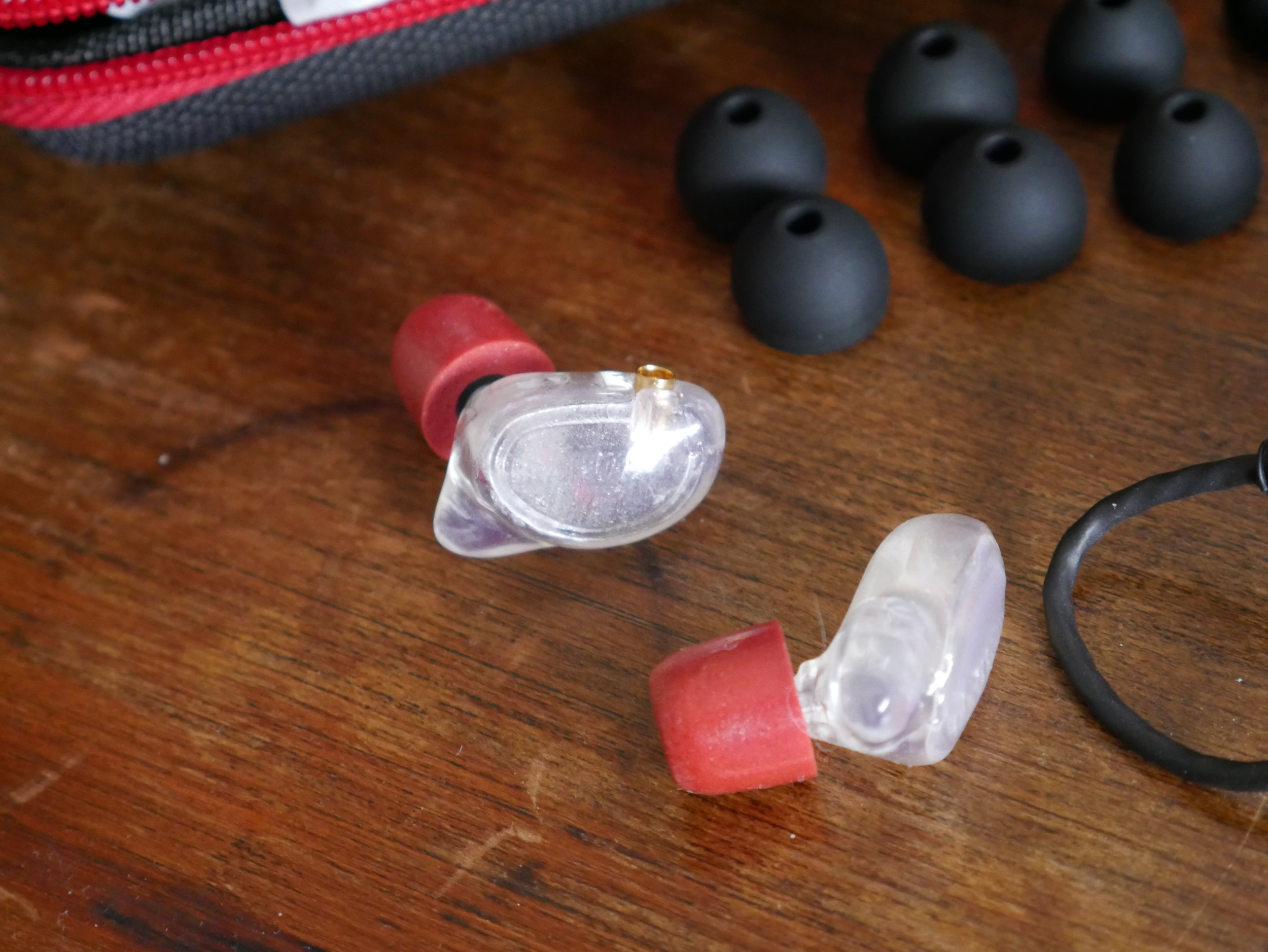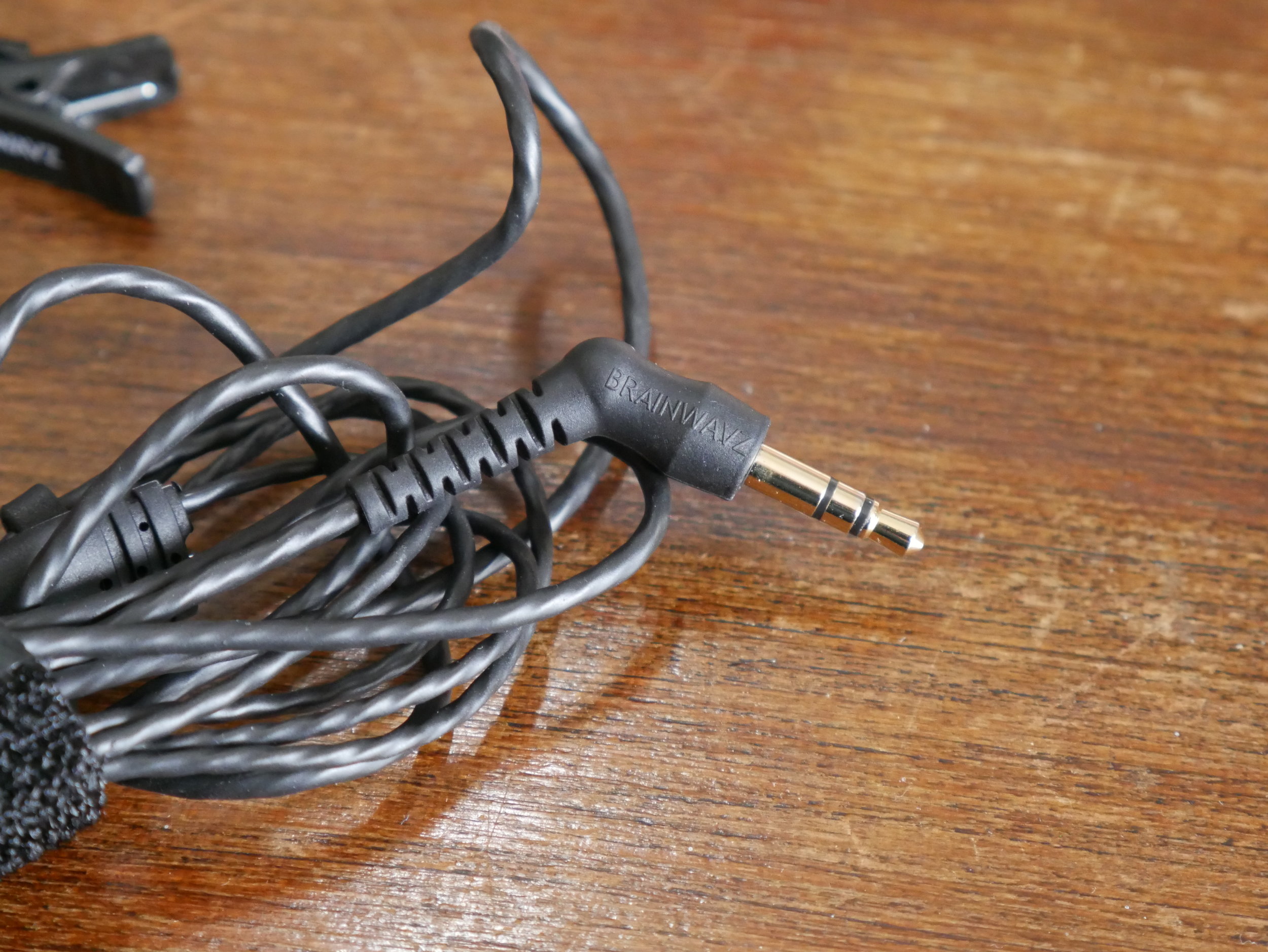Price: 100€
Where to buy them: [link]
Specifications:
Frequency response: 20-40k Hz
Impedance: 12 Ohm
Sensitivity: 106±3dB
Connectors: 2pin 0.78mm
Driver configuration: 1DD+4BA
Many thanks to AK Audio for providing this review sample and an upgrade cable. You can always get a little discount by buying earphones by them, if you write “techinblack” as a message for the seller before paying anything. This is not an affiliation: techinblack doesn’t get anything if you do like that, but you can pay a little less. It’s all for the music. Peace.
Unboxing and first impressions
Similarly to other YinYoo earphones, the Topaz come in a shiny blue cardboard box, which contains a classic hard case, which in turn contains the buds, the cable, a clip and the eartips (S-M-L wide bore and S-M-L small bore: 6 pairs in total). AK Audio sent me an upgrade cable, which you can buy together with the Topaz. As always, there’s a complete set of accessories; the only thing I would have added is – at least – a pair of foam ear tips: this is a 100$+ contender and the others usually have a pair of them (BGVP/NiceHCK/BRAINWAVZ…). The stock cable is the same cable as the YinYoo D2B4 (here is not MMCX but 2pin), surely a tool but honestly bad looking and too rubberish. The upgrade cable you can choose is very similar to the BGVP DMG silver cable, a very good one overall, especially for the price. The buds themselves are amazing: great looking, with a nice choice of materials. They are made of metal and they may be an answer to IKKO’s OH1/OH10 in terms of design, even though the Topaz are more regular in their shape. You can see the vents for the dynamic driver precisely cut on the shell. I don’t know why YinYoo tends to produce different models with different connectors, but as long as there are compatible upgrade cables, it doesn’t bother me at all. In the end, I’ve paired them with a TRIPOWIN C8 cable, which is fantastic. For the eartips, I enjoy the foams which come with the AudioSense T800, they improve the fit and the isolation, which are not the stronger points of the Topaz.
Sound
My sources: FiiO M7, Mi MIX 2 with DAC Zorloo ZuperDAC-S and MacBook Pro 2012 with USB audio interface Focusrite 2i2 first gen, iFi xDSD and XDUOO XP-2
My files: DSD, FLAC, ALAC, MP3, M4A
My music: “Colour the Small One” by Sia, “Djesse Vol.1” by Jacob Collier, “Where are You?” by Frank Sinatra, “Ghost Stories” by Coldplay, “O” by Damien Rice, and many other tracks by Queen, Pink Floyd, Genesis, Radiohead, Billie Eilish, The Bloody Beetroots, …
I didn’t have the highest expectations for these Topaz, because the last YinYoo I’ve tried (D2B4) really left me a sour taste. Instead, I actually found one of the better sounding earphones of my entire collection. I didn’t expect a sound that balanced and close to neutral for an earphone that’s still mass-oriented. If you’re familiar with the Tin HiFi T2, you’ll understand this sound. It’s extremely clear and transparent, airy and spacious. The Topaz are a little more bassy than the T2, and they are superior detail-wise. That being said, the bass is extremely controlled, the mid-bass is not emphasized at all, and you can hear a good sub-bass rumble. The speed of it is pretty standard, for a dynamic driver you may expect a little more body, but again: this is a close-to-neutral IEM, and it can be recommended for music production thanks to its flatness. Mids are great: comfortable, a little notched, but pleasantly airy for vocals, and well layered for instruments. I like how everything sounds very balanced, without any emphasis on certain frequencies or instruments. Earphones like the AudioSense T800 – which I borrowed the foam tips to – are much more vocal-oriented, even though the instruments don’t feel undertone. This is a really different tuning, and in my opinion for a hybrid it’s a very well-done one. Treble is clear and airy. No noticeable sibilance there, no harshness, but a touch of brightness which is good as long as you need to hear the details and perceive the stage. Vocals are pleasant and feel natural even on the high range. The soundstage is wider than average, while just average in its depth. Imaging is very good: even though there’s not a crazy wideness, the precision of the position of the parts is impressive. Speaking of isolation, the shape is not particularly ergonomic like it may seem, so it’s not that easy to get a good seal with the stock tips. Yet, if you use a good pair of foams, that helps a lot on improving the fit and the seal and you get less leak on the bass side.
Comparisons
YinYoo D2B4: they are much more bassy and V-shaped. The sound of D2B4 is congested, too much for my taste, it resembles a bad version of the BGVP DM6 tuning. Luckily, the Topaz are a giant step up from the D2B4 in terms of tuning, clarity, stage perception. These two share the same difficulties in ergonomics, for my particular ears, but it’s a side issue because you can improve that with some foams. I wouldn’t recommend the D2B4 to many, because I feel like there are better choices on the same price range, with the same (good) build quality, like the NiceHCK M6 or TinAudio T3. Instead, I would recommend the Topaz to the ones who need a good tool for production or need to listen to music with a high fidelity. Absolutely not for bassheads.
Tin HiFi T3: their tuning is different from the T2’s one, which is closer to the Topaz’s one. But the T3 are more comparable due to their improved detail and bass. I personally don’t think there’s one absolutely better than the other, but they are different products. T3 are more sibilant, or let’s say less gentle in the high range. And they are more bassy. If you like a balanced, yet fun listening, they would be a better choice over the Topaz, which are much more on a neutral side. My personal choice, because of my needs, would be the Topaz (but make sure you get a nicer cable; the stock one does these IEMs no credit).
BGVP DMG/NiceHCK M6: these two siblings are just fun. Very bassy, heavily U-shaped, I love them but they are not meant to be used as tools for production. They are good live stage monitors, though. But if you need something for mixing, the Topaz are more useful. The fit is worse on the Yinyoo, but this could be a personal factor. Build-wise, we are at the same level. I also think the upgrade cable which you can order with the Topaz is the same as the other two, just with different colors and details. Still, if I had to recommend something, if you need a flat sound, go for the Topaz; if you want a versatile IEM for various genres and situations, and especially a fun one, go for the M6: they are very cheap for their offering.
BGVP DM6: strange comparison? 200$ is twice the price of the Topaz. But I’m here to say I’d get two Topaz instead of a single DM6. Or even a single Topaz because their value for money is way higher than the DM6’s one. DM6 are too congested and their stage is too close. Clarity and tuning of the Topaz win over the superb detail of the DM6’s Balanced Armatures. And this is a personal opinion, obviously. I wouldn’t choose the D2B4 over the DM6 as other reviewers said, but I’d go for the Topaz because of their balance. Build quality, tuning, accessories, design: the Topaz are phenomenal monitors for their price.
Simgot EM1: maybe my favourite earphones. Single dynamic driver, an incredibly versatile IEM with a fun yet balanced tuning. They are much more musical than the Topaz, but less precise. And they are a little bit sibilant. Don’t ask me to choose between the two, please. They are so different, but I love them both. No, I choose the EM1.
Conclusions
I don’t have much to say: these are convincing In Ear Monitors. Actually one of my favourite ever. They look amazing, they are crazy well built, their sound is the one I usually search for, and if you find the right eartips, you’ll also find them comfortable and sealed. The price tag of 100$, considered the actual market, is pretty fair. With a better stock cable and some foam tips in the box, I would have paid much more, considering how solid the Topaz are. With the Simgot EM1, they actually are the overall most convincing earphones I’ve tried on a budget. If I had to pick a fun one and a flat one under 100$, these two would be my choices.
Pros
Accessories
Tuning
Clarity
Natural timbre
Flat sound signature
Cons
Stock cable
No foam tips
Bass may be lacking for some













